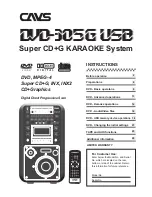
Installation and Programming Manual
Mircom Technologies Inc
All Rights Reserved
LT-1034 Rev.1
Page 51 of 54
11.0 WARRANTY AND GOODS RETURN POLICY
Warning to installers:
This warning contains vital information. As the only individual in contact with system users, it is your
responsibility to bring each item in this warning to the attention of the users of this system. Failure to properly
inform system end-users of the circumstances in which the system might fail may result in over-reliance upon
the system. As a result, it is imperative that you properly inform each customer for whom you install the
system of the possible forms of failure.
System Failures:
This system has been carefully designed to be as effective as possible. There are circumstances, such as fire
or other types of emergencies where it may not provide signaling capabilities and/or protection. Alarm
systems and accessories to these systems may be compromised deliberately or may fail to operate as
expected for a variety of reasons. Some reasons for system failure include:
-Inadequate Installation
A Fire Alarm System and/or Accessory to must be installed in accordance with all applicable codes and
standards in order to provide adequate protection and signaling capabilities. An inspection and approval
of the initial installation, or, after any changes to the system, must be conducted by the Local Authority
Having Jurisdiction. Such inspections ensure installation has been carried out properly. In Canada, a
second party Verification according to ULC-S537-99 – ‘Standard for the Verification of Fire Alarm
Systems’ must be performed prior to commissioning.
-Power Failure and Replaceable Batteries
Control units, smoke detectors and the ISD-1000 In-suite Signaling Devices require an adequate power
supply for proper operation. If the system or any device connected to the system operates from standby
batteries, it is possible for the batteries to fail. Even if the batteries have not failed, they must be full or
close to fully charged.
In the case of the ISD-1000 rechargeable NiMH batteries, expected battery life is a function of the
environmental fluctuations which may damage electronic equipment such as a fire alarm control or
monitoring unit. After a power interruption has occurred, immediately conduct a complete system test to
insure that the system operates as intended. Even though these batteries should last several years, ‘low
battery warnings’ may not be evident as yet, and may warrant battery replacement. The low battery
monitoring device may also have failed.
-System Users
It is important that all system users be trained in the correct operation of the alarm/signaling system and
that they know how to respond when the system indicates either an alarm or trouble condition. Those ISD
units that are programmed to be ‘Message Units’ for certain individuals have to be trained to respond to
these alerts that there is a ‘trouble condition’ on the Network and the fault(s) must be corrected in a timely
manner.
-Automatic Alarm Initiating Devices
Smoke detectors, heat detectors and other alarm initiating devices that are part of this system may not
properly detect a fire condition or signal the control panel to alert occupants of a fire condition for a
number of reasons, such as :
o
the smoke detectors and/or heat detectors may have been improperly installed or positioned ;
o
smoke or heat may not be able to reach the alarm initiating device or
o
the fire is on another level of the building.
Every fire is different in the amount and rate at which smoke and heat are generated. Smoke detectors
can not sense all types of fires equally well. Even if the smoke or heat detector operates as intended,
there may be circumstances when there is insufficient warning to allow all occupants to escape in time to
avoid injury or death. In the case of the NMC-100 acting as an ‘Accessory’ to the Fire Alarm Panel, the
Содержание Fire-Link ISD-1000 Series
Страница 2: ......





































